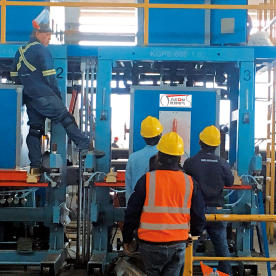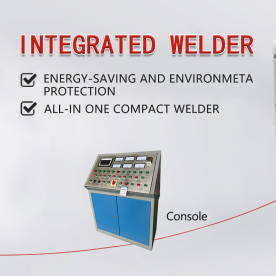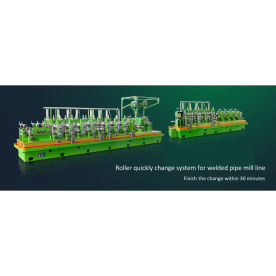[Energy-efficient Pipe mill production line]Maximizing Productivity and Sustainability: The Benefits of an Energy-Efficient Pipe Mill Production Line in Modern Manufacturing
News 2024-11-7

Maximizing Productivity and Sustainability: The Benefits of an Energy-Efficient Pipe Mill Production Line in Modern Manufacturing
Understanding the Importance of Energy Efficiency in Pipe Mills
Pipe mills are integral to various sectors, including construction, automotive, oil and gas, and many others that require high-performance piping solutions. However, traditional pipe mill production lines often operate at low energy efficiency, leading to excessive energy consumption and high operational costs. As the global demand for pipes continues to rise, manufacturers are compelled to seek innovative methods to improve efficiency while adhering to sustainability practices.
An energy-efficient pipe mill production line employs advanced technologies and equipment designed to minimize energy consumption throughout the manufacturing process. Reducing energy usage not only lowers expenses but also lessens the carbon footprint of production operations, aligning with global efforts to combat climate change.
Key Features of an Energy-Efficient Pipe Mill Production Line
1. **Advanced Automation**: Incorporating automation technologies, such as programmable logic controllers (PLCs) and industrial robots, significantly enhances production efficiency. Automation ensures precision in operations, reduces the likelihood of human errors, and minimizes downtime by facilitating seamless transitions between tasks.
2. **Energy Recovery Systems**: Innovative energy recovery systems can capture and reuse wasted energy from production processes. For example, excess heat generated during production can be harnessed and converted into usable energy for other operations within the facility.

Maximizing Productivity and Sustainability: The Benefits of an Energy-Efficient Pipe Mill Production Line in Modern Manufacturing
4. **High-Efficiency Equipment**: Utilizing high-efficiency motors, drives, and other machinery within the pipe mill reduces energy consumption substantially. Investing in equipment that has been specifically designed for energy savings ensures that the entire production line operates more sustainably.

Maximizing Productivity and Sustainability: The Benefits of an Energy-Efficient Pipe Mill Production Line in Modern Manufacturing
Benefits of an Energy-Efficient Pipe Mill Production Line
1. **Cost Savings**: The implementation of energy-efficient technologies leads to significant reductions in operational costs. By decreasing energy consumption, manufacturers can reallocate resources to other vital areas of production or invest in further innovations.
2. **Improved Product Quality**: Energy-efficient production lines often lead to enhanced consistency and quality in the finished products. Improved process control and reduced fluctuations in power usage contribute to a more reliable manufacturing process.
3. **Environmental Compliance**: As global regulations regarding emissions and environmental impact grow stricter, adopting energy-efficient practices helps manufacturers stay compliant. This not only mitigates risks but also enhances the company's reputation among environmentally-conscious consumers.
4. **Competitive Advantage**: Businesses that prioritize sustainability and energy efficiency are more likely to gain a competitive edge in today's market. Customers are increasingly looking to partner with organizations that demonstrate a commitment to reducing their carbon footprint.
5. **Future-Proofing Operations**: As technology continues to advance, investing in energy-efficient pipe mill production lines ensures that manufacturers can adapt to future trends and standards in energy regulation, positioning them for long-term success.
Conclusion
The shift towards energy-efficient pipe mill production lines is not merely a trend, but a necessary evolution within the manufacturing industry. By embracing advanced technologies and prioritizing sustainability, manufacturers can enhance productivity, reduce costs, and contribute to a greener future. As the demand for high-quality piping solutions continues to grow, investing in energy efficiency is an investment in a stronger and more sustainable operational foundation. With the ongoing commitment to these innovations, businesses in the pipe production sector are well-equipped to meet the challenges of tomorrow and thrive in an increasingly competitive landscape.
